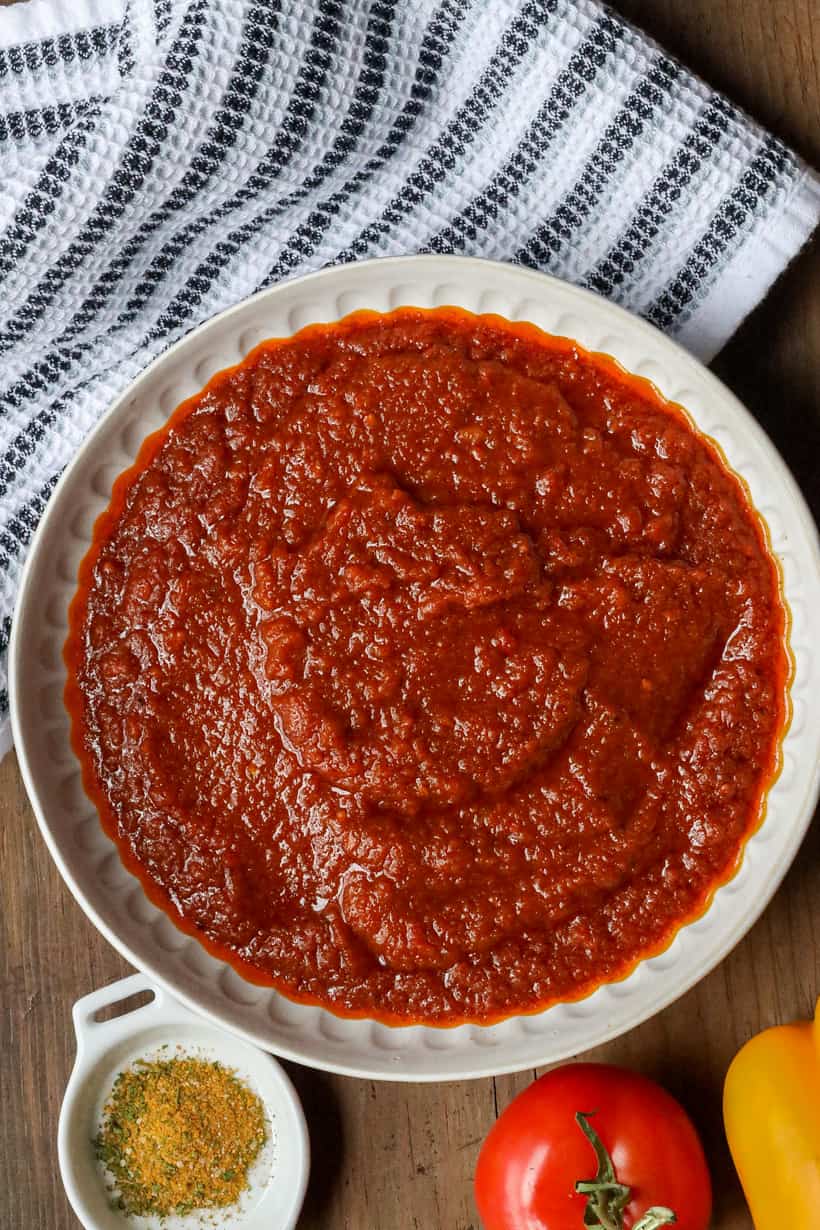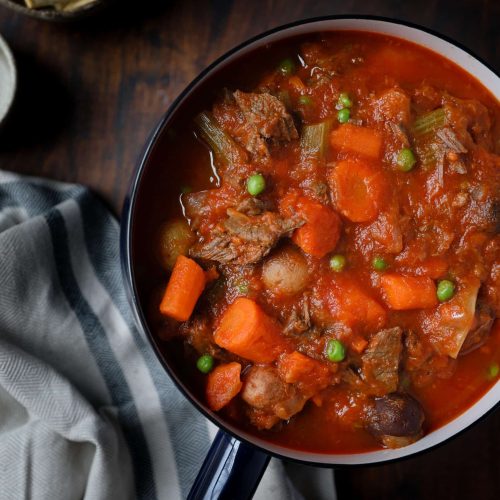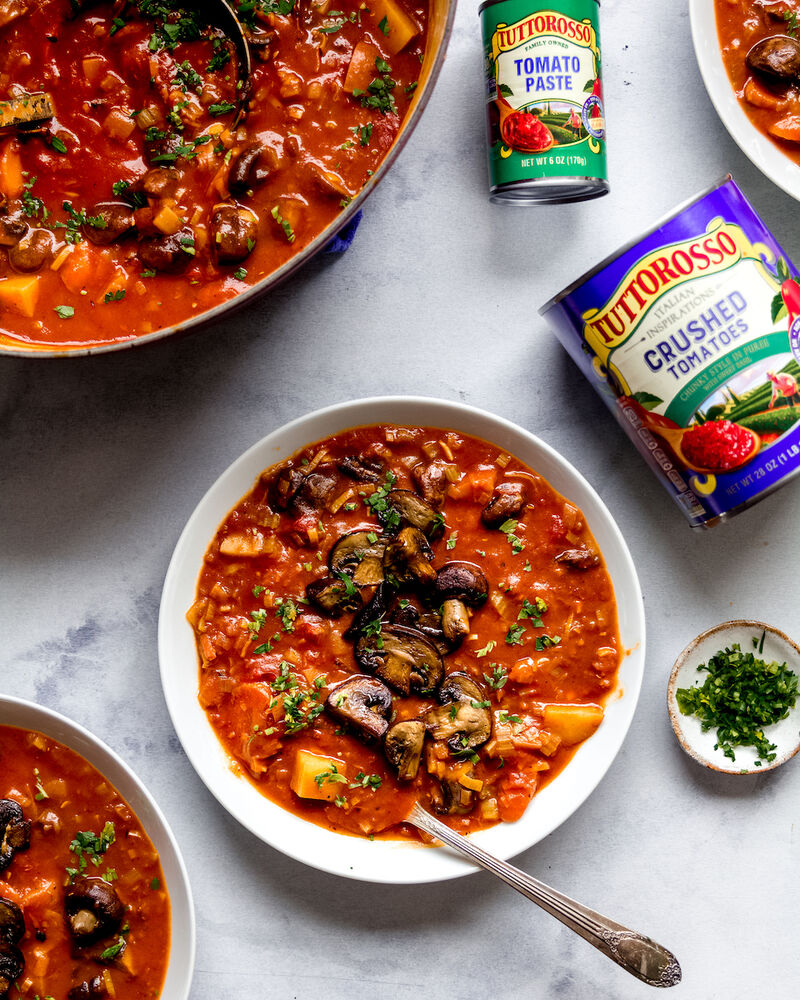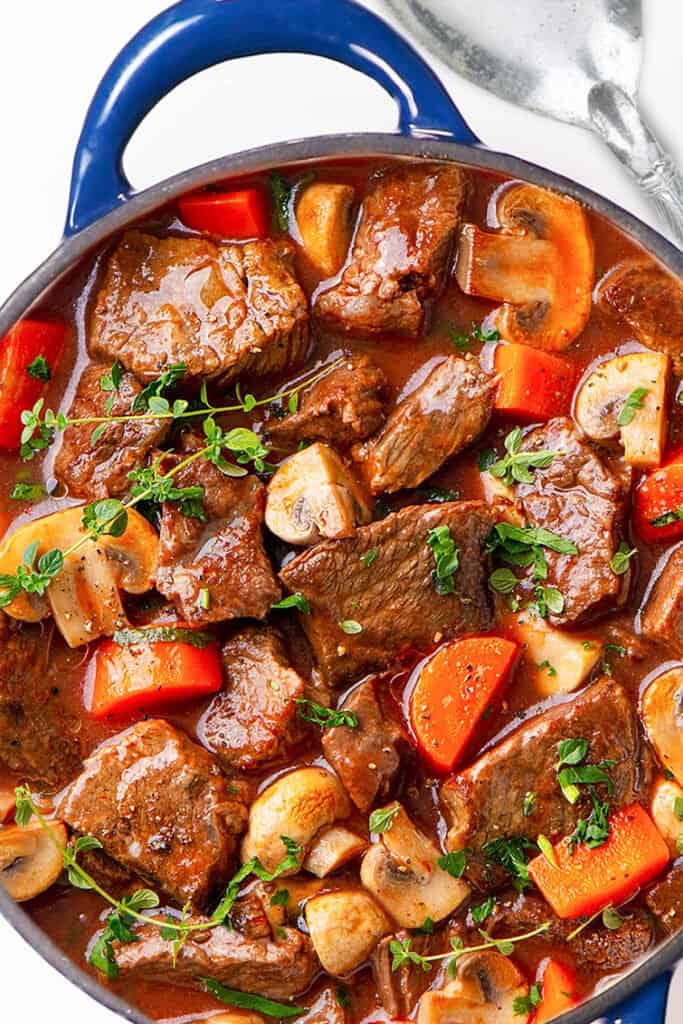Tomato stew is a timeless and versatile dish enjoyed by many cultures around the world, renowned for its rich, tangy flavor and comforting warmth. At the heart of tomato stew are tomatoes, a fruit celebrated not only for their vibrant taste but also for their nutritional benefits, including being a good source of vitamins C, K, and potassium.
The foundation of a good tomato stew begins with ripe, juicy tomatoes that form a savory base, which is then built upon with various herbs, spices, and ingredients to create depth and complexity in flavor. Common additions include onions, garlic, bell peppers, and a medley of herbs such as basil, oregano, and thyme, which complement the acidity of the tomatoes beautifully.
Depending on the region and personal preference, tomato stew can include a range of proteins like beef, chicken, fish, or legumes, making it a hearty and satisfying meal. The stew is often simmered to allow the flavors to meld together, resulting in a dish that’s both aromatic and delicious.
Tomato stew Recipe


Tomato stew
Equipment
- 1 skillet
Ingredients
- 1 handful Chopped parsley
- 2 Tbsp. Olive oil
- 2 Chopped onions
- 1 Sliced red bell pepper
- 2 Chopped tomatoes
Instructions
- When you are ready to get started with this recipe, take some oil and heat it up in a skillet. Allow the onion to be in the skillet until it is see through.
- Now you can slice up the bell pepper and add it along with the tomatoes into the skillet.
- You can allow this to cook a bit longer so that the water is all gone and the vegetables are all soft.
- Sprinkle on some of the seasonings of your choice before serving.
Cooking Tips about Tomato Stew

Selection of Tomatoes
The foundation of any good tomato stew is naturally the tomatoes. For the richest flavor, choose ripe, in-season tomatoes. Different varieties offer different flavor profiles:
- Roma or Plum Tomatoes: These have fewer seeds and are meatier, making them a great choice for stews.
- Heirloom Tomatoes: Offer unique flavors depending on the variety, adding complexity to your stew.
If fresh tomatoes aren’t an option, canned tomatoes can be a fantastic alternative. Look for whole, peeled San Marzano tomatoes for their superior taste. The canned tomatoes shouldn’t have additives like calcium chloride, which can make them overly firm.
Building Flavor
- Sauté Aromatics: Start by sautéing onions and garlic in olive oil or butter until they’re soft and golden. This caramelization process lays the groundwork for deep, rich flavor in your stew.
- Utilize Fresh Herbs: Fresh herbs like basil, oregano, and thyme complement tomatoes well. Adding them early in the cooking process allows their flavors to infuse the stew. Bay leaves are also excellent for adding depth.
- Consider a Umami Component: Incorporating ingredients rich in umami, such as anchovies, Parmesan rind, or a dash of soy sauce, can elevate the stew with a background depth that balances the tomato’s acidity without overpowering the dish.
Cooking Process
- Simmer Slowly: After adding your tomatoes to the aromatics and herbs, bring your stew to a simmer and then reduce the heat. Slow cooking is key to allowing the flavors to meld together. A longer simmering time will generally result in a better-flavored stew but be careful of overcooking, which can reduce the tomatoes to a flavorless mush.
- Adjusting Acidity and Sweetness: Tomatoes naturally have a balance of acidity and sweetness, but this can vary depending on their ripeness and type. Taste your stew as it simmers and adjust accordingly. If it’s too acidic, a pinch of sugar or a splash of carrot juice can add subtle sweetness. If it’s too sweet, a splash of vinegar or lemon juice can help balance the flavors.
Serving suggestions about Tomato Stew
- As a Base for Proteins: Tomato stew can serve as a flavorful base for adding proteins. This makes it a perfect accompaniment for fish, chicken, or meatballs. Incorporating these proteins can transform the stew into a hearty main dish suitable for lunches and dinners.
- With Grains: Serving the stew alongside or on top of grains like rice, couscous, or quinoa can make for a fulfilling meal. The grains absorb the stew’s flavors, creating a delicious and satisfying combination.
- Over Pasta: Pouring tomato stew over pasta can create a comforting meal reminiscent of classic Italian dishes. Whether it’s spaghetti, penne, or any other pasta type, the stew works wonderfully as a sauce, enriching the pasta with its rich and hearty flavors.
- With Crusty Bread: Enjoying tomato stew with a side of crusty bread offers a simple yet immensely satisfying dining experience. The bread is perfect for dipping into the stew, ensuring you capture every bit of its flavorful broth.
- Luxurious Touches: To add a luxurious touch before serving, consider finishing your stew with a drizzle of good-quality extra virgin olive oil or a sprinkle of fresh, chopped herbs like parsley or basil. These additions contribute to the freshness and vibrancy of the dish. Additionally, a dollop of cream or some crumbled cheese like feta or parmesan can be added to balance the stew’s acidity and add a creamy, rich texture.
Top 5 FAQs about Tomato Stew

- What are the best types of tomatoes for making tomato stew?The best tomatoes for tomato stew are ripe, in-season varieties that offer rich flavors. Roma or Plum Tomatoes are excellent due to their meaty texture and fewer seeds, making them ideal for stews. Heirloom Tomatoes also provide unique flavors adding complexity to the dish. If fresh tomatoes aren’t available, whole, peeled San Marzano tomatoes can be a great canned alternative.
- How can I enhance the flavor of my tomato stew? To enhance the flavor of tomato stew, start by sautéing onions and garlic in olive oil or butter until they’re softly golden. Fresh herbs like basil, oregano, and thyme can significantly complement tomato flavors, while bay leaves add depth. For an added layer of taste, incorporating umami-rich ingredients such as anchovies, Parmesan rind, or a dash of soy sauce will balance the acidity of the tomatoes without overwhelming the stew.
- My tomato stew tastes too acidic. How can I adjust it? If your tomato stew is too acidic, try adding a pinch of sugar or a splash of carrot juice to introduce subtle sweetness, which can balance the acidity. Taste as you cook and adjust accordingly to achieve the perfect balance of flavors.
- What can I do if my tomato stew is too watery or too thick? If the stew is too watery, allow it to simmer uncovered to reduce the liquid to your desired consistency. Conversely, if it’s too thick, add a bit of vegetable stock or water to achieve the right texture. Adjustment during the cooking process is key to obtaining the perfect stew thickness.
- How can I serve tomato stew for a diverse culinary experience? Tomato stew can be served in numerous ways, making it a versatile dish for various meals. It can act as a base for proteins such as fish, chicken, or meatballs, turning it into a hearty main dish. Serving it alongside or on top of grains like rice, couscous, or quinoa creates a fulfilling meal as the grains soak up the stew’s flavors. Pouring the stew over pasta offers a comfort meal option, while pairing it with crusty bread makes for an enjoyable simple dish. For a luxurious touch, finish the stew with a drizzle of good-quality extra virgin olive oil or fresh herbs, or add cream or crumbled cheese to balance acidity and add richness.
Tomato stew is a testament to the beauty and versatility of simple, quality ingredients coming together to create something deeply comforting and universally enjoyed. Its essence lies not just in the choice of ripe, flavorful tomatoes but also in the careful preparation and combination of elements like fresh herbs, aromatic vegetables, and umami-rich additions that elevate the dish to new heights.
Leave a Reply